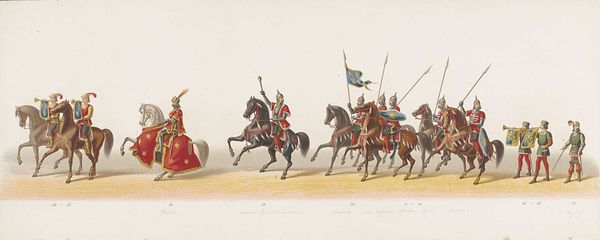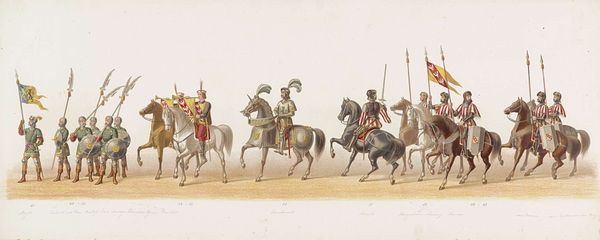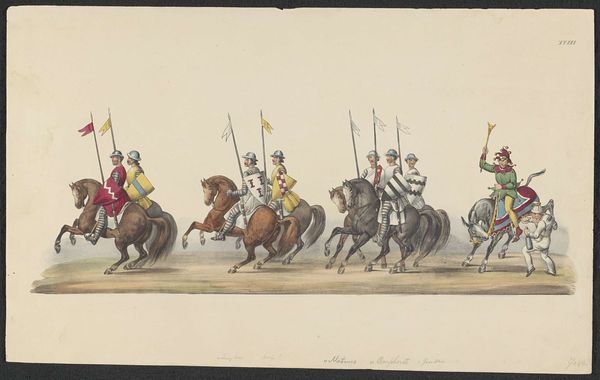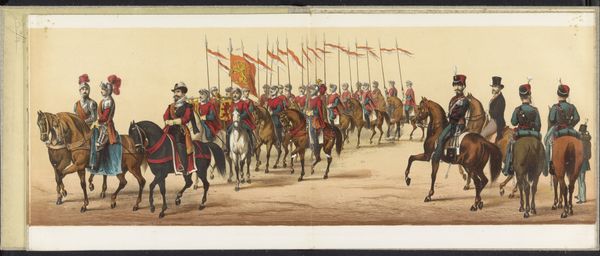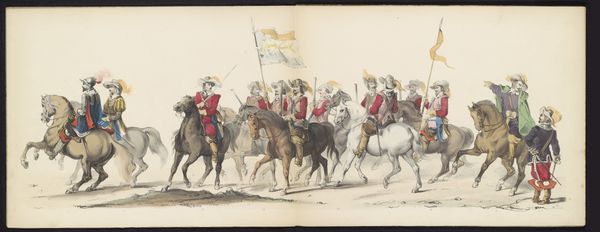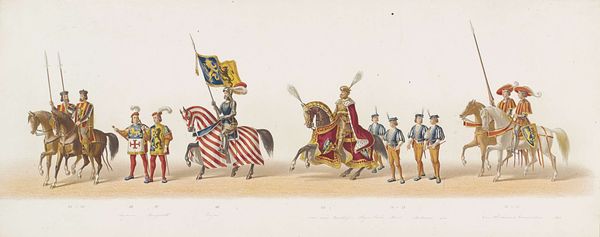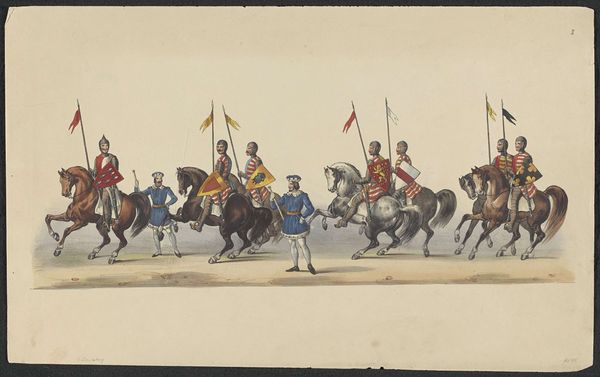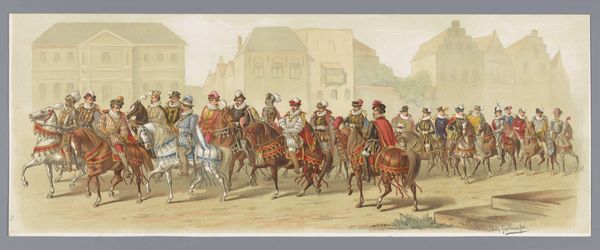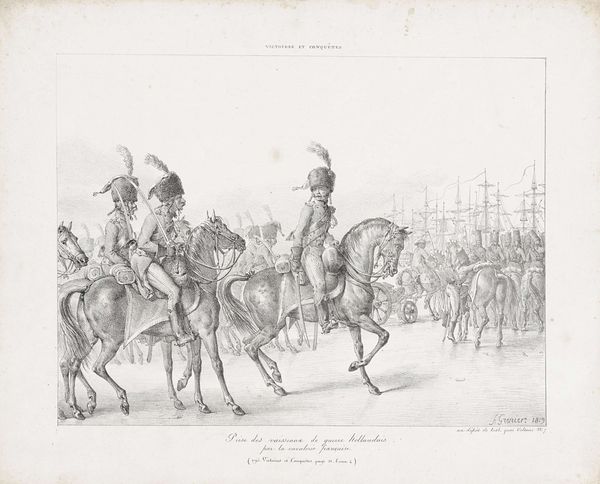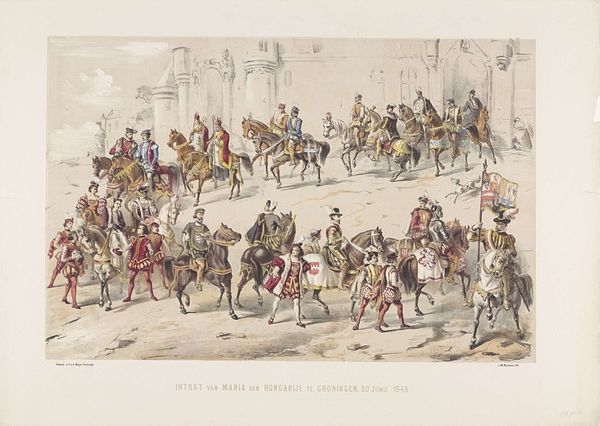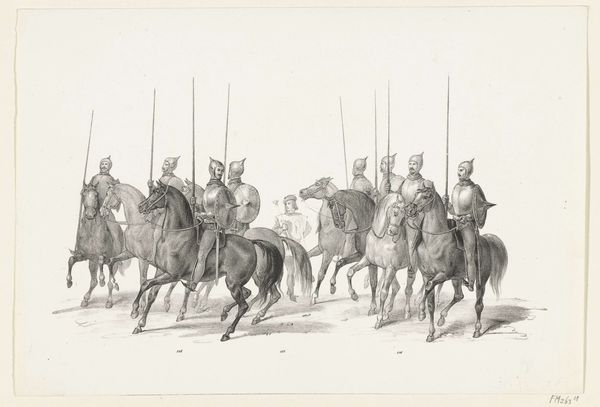
print, watercolor
# print
#
landscape
#
figuration
#
watercolor
#
coloured pencil
#
watercolour illustration
#
genre-painting
#
history-painting
#
academic-art
#
watercolor
Dimensions: height 290 mm, width 725 mm
Copyright: Rijks Museum: Open Domain
Editor: This is "Delftse optocht van 1873 (eerste plaat)," from 1873, and it appears to be a print made with watercolor and colored pencil. The parade of riders gives me a feeling of stately tradition and a bit of romanticism, given their historical attire. What sociopolitical statements are present in the choice to revisit this kind of pageantry? Curator: I appreciate you pointing out that tension between tradition and romanticism. When we look at art like this, especially genre and history painting, it’s critical to examine whose history is being celebrated, and why *then*? Consider the moment of its creation: 1873. Europe was rapidly changing, seeing the rise of nation-states and increasing industrialization. In that context, what purpose could this parade serve? Is it a yearning for a past stability, or a deliberate construction of national identity? Editor: So, perhaps it’s not just a celebration of history, but also an active shaping of the present through a specific lens? Were there any marginalized voices left out of this "national" narrative? Curator: Precisely. And you hit on a vital point. Who *isn't* represented in this heroic depiction? Who doesn't get to participate in the performance of national identity? The focus on mounted figures suggests a hierarchy, excluding those on foot, and those without the resources to participate. Do you notice anything else about the costuming? Editor: Yes, there's definitely a sense of deliberate historical reconstruction going on in their costumes, which appear more stylized and symbolic than truly accurate to any specific era. It’s almost as if they are creating an idealized, visual origin story. Curator: That's insightful. The past, filtered through the desires and anxieties of the present. Recognizing how those desires shape representations of the past can provide a better understanding of a culture’s self-perception, which remains in effect today. Editor: That definitely helps contextualize this artwork. It seems to me that art like this reminds us to constantly question not just what is shown, but what is left out. Thanks!
Comments
No comments
Be the first to comment and join the conversation on the ultimate creative platform.
